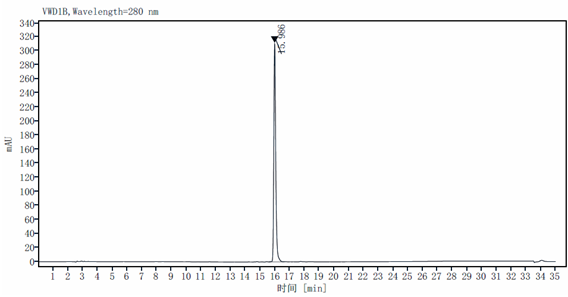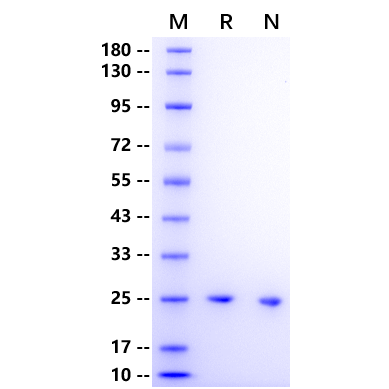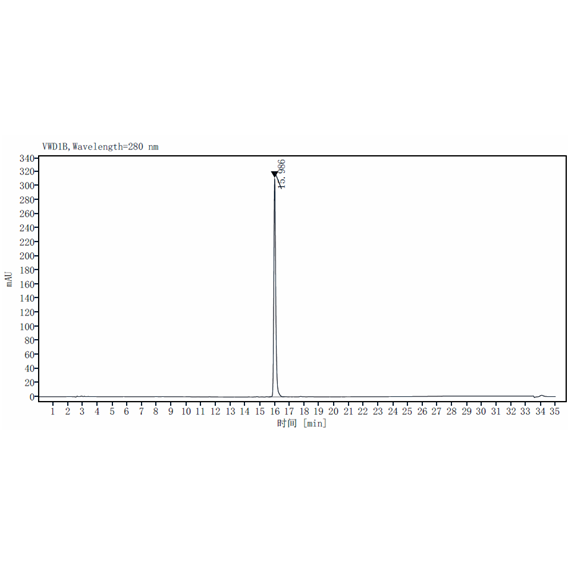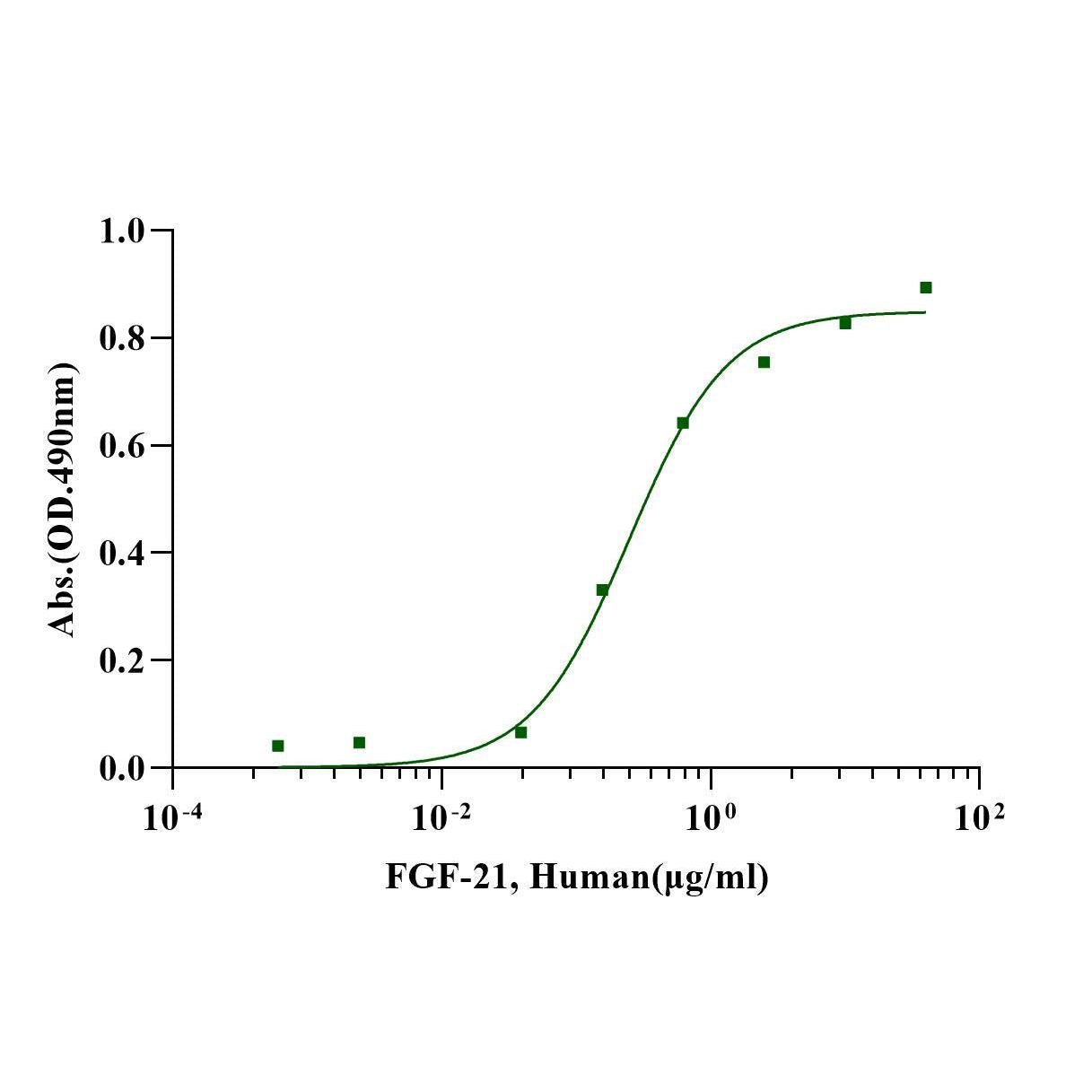Measured in a cell proliferation assay using NIH-3T3 mouse embryonic fibroblast cells. The EC50 this effect is less than 0.5μg/ml in the presence of 1.5 μg/ml recombinant human Klotho β.
Product Details
Product Details
Product Specification
| Species | Human |
| Synonyms | Fibroblast growth factor 21 |
| Accession | Q9NSA1 |
| Amino Acid Sequence | His29-Ser209, with N-terminal 6*His MHHHHHHPIPDSSPLLQFGGQVRQRYLYTDDAQQTEAHLEIREDGTVGGAADQSPESLLQLKALKPGVIQILGVKTSRFLCQRPDGALYGSLHFDPEACSFRELLLEDGYNVYQSEAHGLPLHLPGNKSPHRDPAPRGPARFLPLPGLPPALPEPPGILAPQPPDVGSSDPLSMVGPSQGRSPSYAS |
| Expression System | E.coli |
| Molecular Weight | 25 kDa(Reducing) |
| Purity | >97% by SDS-PAGE & RP-HPLC |
| Endotoxin | <1EU/μg |
| Conjugation | Unconjugated |
| Tag | His Tag |
| Physical Appearance | Lyophilized Powder |
| Storage Buffer | 20mM Tris, 100mM NaCl, pH7.5 |
| Reconstitution | Reconstitute at 0.1-1 mg/ml according to the size in ultrapure water after rapid centrifugation. |
| Stability & Storage |
· 12 months from date of receipt, lyophilized powder stored at -20 to -80℃. · 3 months, -20 to -80℃ under sterile conditions after reconstitution. · 1 week, 2 to 8℃ under sterile conditions after reconstitution. · Please avoid repeated freeze-thaw cycles. |
Background
Fibroblast growth factor 21 (FGF-21) is a pleiotropic hormone considered as a major regulator of energy homeostasis. FGF-21 is mainly secreted by the liver, but it may also be expressed in skeletal muscle. In this sense, FGF-21 protein expression is induced by insulin in C2C12 myocytes, and FGF21 mRNA is upregulated by hyperinsulinemia in skeletal muscle in young healthy men. Moreover, it has been suggested that FGF-21 is a signal secreted by the skeletal muscle to communicate with adipose tissue under stress conditions. FGF21 has been shown to be a major regulator of hepatic lipid metabolism, with FGF-21 overexpressing mice being resistant to diet-induced obesity. Interestingly, recent studies suggest that FGF21 may exert anti-inflammatory actions in the pancreas, heart, and skeletal muscle. A reduction in the JNK and NF-κB signaling pathways has been proposed as the potential mechanism implicated in the FGF-21 anti-inflammatory effects.
Picture
Picture
Bioactivity
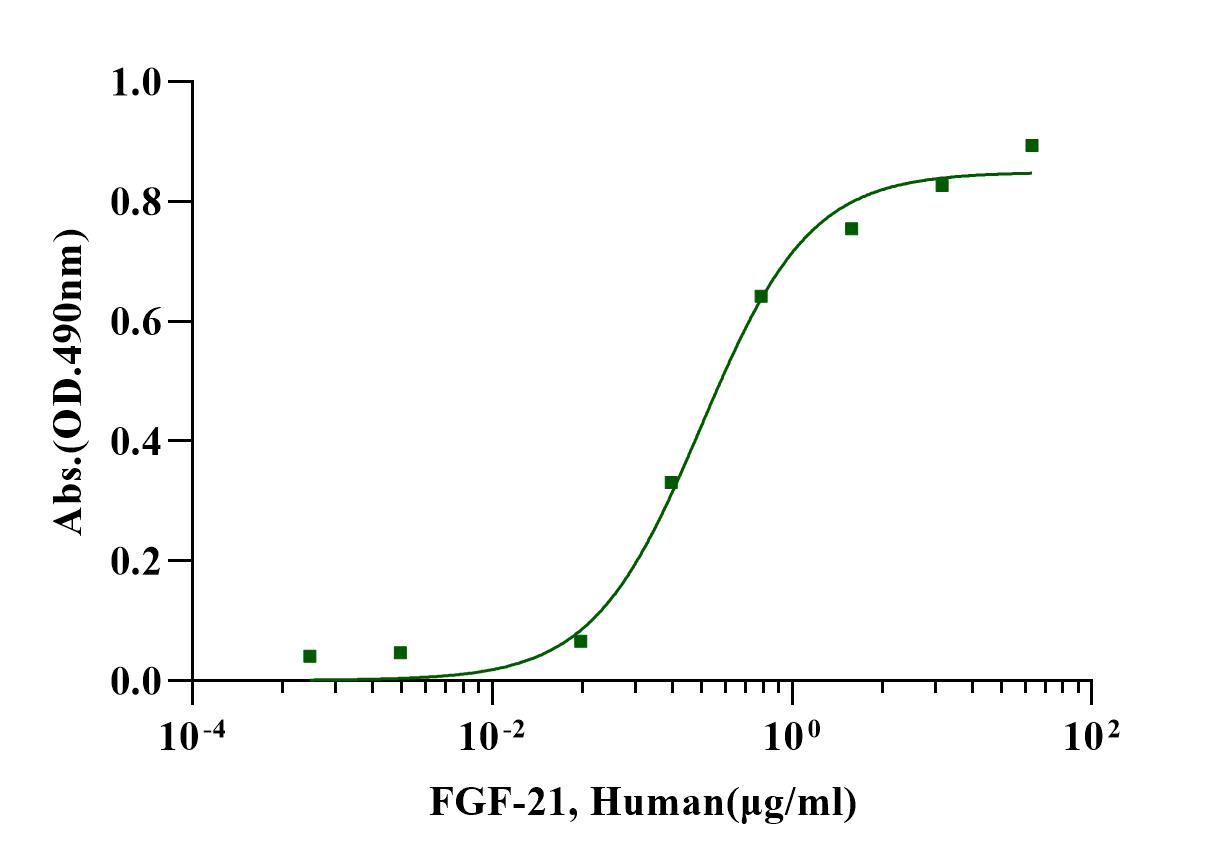
SDS-PAGE
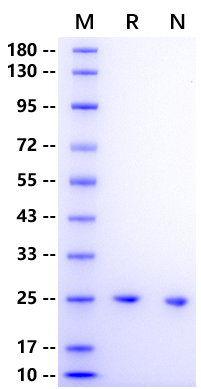
RP-HPLC
